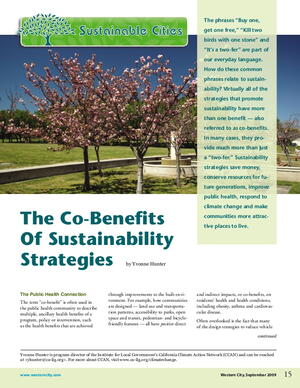
The term “co-benefit” is often used in the public health community to describe multiple, ancillary health benefits of a program, policy or intervention, such as the health benefits that are achieved through improvements to the built environment. For example, how communities are designed — land use and transportation patterns, accessibility to parks, open space and transit, pedestrian- and bicyclefriendly features — all have positive direct and indirect impacts, or co-benefits, on residents’ health and health conditions, including obesity, asthma and cardiovascular disease.
